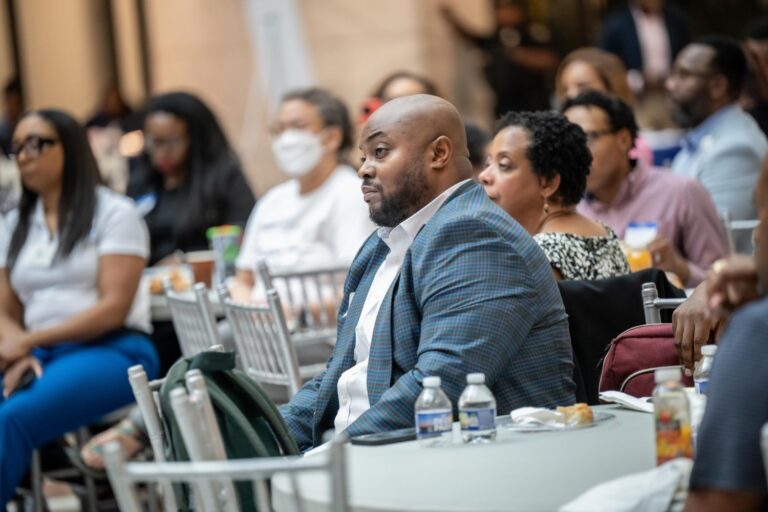How Marvin Keeps Workers Happy from Renovation Inspired by Big Tech
Unemployment in the United States near record low levels. The state unemployment rate significantly dropped to 3.5 percent in early September, the lowest in over 50 years and it has been hovering around it in the months since – regarding the 19th consecutive month at or below 4 percent. The number of unemployed declined from 275,000 to 5.8 million and U.S. employers added 136,000 jobs last month, according to the latest Bureau of Labor Statistics (BLS) report. Employment is particularly conspicuous considering that the United States is in the midst of the prolonged economic recovery in its history. The Trump Administration’s pro-growth agenda provides job creators with the framework they need to broaden their business landscape, deliver business value with agile and afford more opportunities for employees.
The economy has added over 6.4 million jobs and continues to draw employees off the sidelines in lieu of stagnant economic growth and the introduction of new tariffs in September. Incessant job growth in combination with sustained year-over-year wage increases are not only a positive sign for the economy: They also ameliorate workers’ quality of life as well as incentivize previously left-behind Americans to partake the labor force. All Americans are benefiting from the labor market’s uninterrupted augmentation. The lowest unemployment rates on record were matched or set in September 2019 for African – Americans, Hispanics and people with disabilities.
Additionally, the unemployment rate for people without a high school diploma dipped to 4.8 percent, the lowest rate since the series inaugurated in 1992 and much lower than the 7.8 percent rate in November 2016. The unemployment rate for people without a tertiary education decreased at a faster rate than the unemployment rate for those with a bachelor’s degree or higher. The decline has narrowed the gap between the unemployment rate for people who did not graduate from high school and the unemployment rate for college graduates to 2.8 percentage points, matching the lowest gap ever seen in series.
It is discernibly posited that skilled employees have an advantage in accelerating job market, as demand is remarkably outstripping talent supply across the United States, many jobs are being added and unemployment is at the lowest levels last seen since the first lunar landing. The employment-to-population ratio for workers aged 25-54 continued to rocket up to 80.1 percent, following an escalation the previous month, along with the prime-age employment for women stepped up in September to 74 percent, it is the highest levels since 2001.
The overall composition of the work is encouraging. Job gains in September were led by health care (39,000 new jobs), professional and business services (34,000), which includes many service development-related jobs, government (22,000) and transportation and warehousing (16,000). However, the most disquieting figures in the report are the months-long decline in manufacturing jobs (-2,000 jobs in September). In 2018, production employees saw their opportunities expand and their wages surge. Many negotiated new contracts raising salaries and benefits for new hires and disposing of a two-tier system that paid proficient workers less than grandfathered employees. In 2019, on the contrary, manufacturing workers are worried about the prospect of pink slips.
In this tight labor market, with more jobs available than people to fill them, companies must find new innovative ways to recruit talent and retain current employees. Privileges such as glistening office renovations, healthy snacks and flexible schedules are common at many technology companies in cities like San Francisco, New York and Austin. But with unemployment too low and fierce competition for skilled workers, companies outside major cities are implementing creative benefits to draw workers’ attention.
Take Warroad, Minnesota for example. This rural town is resided just six miles from the Canadian border and boasts a total population of about 1,700 people. Marvin, the largest owner in town, and one of the largest companies in the region, is a century-old manufacturing company. As part of Marvin’s endeavors to supplement its workforce, the family-owned company is taking a page out of the Silicon Valley’s playbook and renovating all the common spaces in the factory. The project required constructing new, glistening, contemporary break rooms inspired by offices from Google and Airbnb.
How Marvin Can Adapt to Hire Suitable Employees in Tight Labor Market?
In 2019, unemployment remained below 4 percent, representing the strongest annual performance since 1969. This is positive news as the prosperous job market is a silver bullet for the U.S economy. Nevertheless, this phenomenal growth has made it increasingly difficult to attract qualified workers in many important fields. On the one hand, as a result of a very competitive market for hiring businesses, job seekers and employees have naturally predominated in evaluating and comparing compensation and benefit packages.
While job market across many sectors is growing desirous of employees with selected skills, the number of candidates is considerably shrinking. For the first time since the Department of Labor began tracking job turnover nearly two decades ago, the number of open jobs exceeded the number of job seekers. This is not expected to change in the near future.

Compounding the problem, the number of students attending vocational schools in the past two decades has decreased significantly. This has only added to the reduction of candidates with the trade skills necessary to fill specific positions. In 2018, roughly 69.1 percent of high school graduates chose to attend a college or university, up from 66.7 percent in 2017. While this is great for meeting market demands in industries such as technology, financial services and life sciences, it is statistically less than one-third of high school seniors available for classical professions such as construction or manufacturing.
This is a core reason why the U.S Department of Education reports there will be 68 percent more job opportunities in transportation-related fields than those who will to fill them. The manufacturing industry faces a similar outlook. According to a recent study by Deloitte, it is expected that nearly half of the 2.4 million open manufacturing jobs may not be unfilled in 2028 because of shifting skill sets, retirement and misperceptions about the job. In December 2019, the unemployment rate in the manufacturing space was around 2.7 percent and the labor market for this industry has been getting tighter.
Michael Horrigan took over as the Upjohn Institute’ s president in March 2019. He served previously as associate commissioner with the Bureau of Labor Statistics. “Since 2010, we have had the unemployment rates underneath four percent. Sixteen out of the last 18 months. These are tight labor markets. Firms are competing for 4-hour workers in their training. Any margin they could do to successful compete for them.” said by Horrigan. That competition comes in many forms. According to labor survey conducted in 2019, nearly 62 percent of employers would hire workers with less required experience and several employers are mitigating hiring requirements to flexibly adapt to tight labor market flow. Moreover, larger American corporations have gotten more innovative creative about how they attract and retain their talents. For instance, AOL regularly organizes lip-syncing competitions, meanwhile, Adobe built a meditation room and Intel provides it free of charge on on-site car washes. Factly, many of those corporations are in huge and sprawling industrial metropolises with a profusion of labor forces. By contrast, Marvin is in bucolic town.
Marvin Windows and Doors was inaugurated in Minnesota. Through the years, Marvin Windows and Doors has achieved prominence for innovation, quality and efficiency, making them an industry leader for more than a century. By using the best materials combined with fine craftsmanship, they have been able to offer unparalleled design flexibility and a level of service that has no comparison. This reputation began to take shape early in the 20th century.
The company employs over 2000 people in their Warroad facilities that is more than the entire population of the town. This means that even in a less competitive economy, they will still need to captivate workers’ preference from outside War Road. Even though some manufacturers have laid off workers in recent months, unemployment among the entire manufacturing industry is still low and competition for these workers is as fierce as ever in the Northern Minnesota region. Interestingly, one way that Marvin is currently competing is about increasing wages. The starting salary at Marvin is from USD 15.25 to USD 18.25 per hour, it is higher than Minnesota’s minimum wage, which is USD 10 per hour. With unemployment at historic lows Marvin is pushing up his game, and part of that strategy has turned the factory into a place where people enjoy spending their time in workstation.
Marvin Boosts Workplace Productivity with a Creative Facility Makeover
By creating attractive, effective, innovative and functional workplaces, companies can make positive employee morale and enhance employee motivation and boost employee satisfaction, then it could result in a 20 percent increase in productivity. When workers feel they are important and their work has an impact, it will benefit them, as well as the business itself. With the growth of the modern workforce, the need for facility makeover is more essential than ever. Today, the workplace is leveraged to captivate and retain proficient employees as well as augment productivity across the organization. The ever-changing working environment has made it indispensable for an employee-centric office renovation to come incorporated wellness into facility makeover and operational design. In contrast, a workplace in state of disrepair is stressful for employees, resulting in disengagement, absenteeism and attrition. To accomplish these goals, company need to provide environments that can better support the workforce mobility, improve employee the overall experience and make it easier for employees to complete their tasks.
Marvin understand that a facility makeover is not a capital investment; it is a top-up, improving the physical environment and employee performance. Marvin built a new break room to provide basic amenities for their employees, given a convenient space to invigorate or take a short nap. There is a reason it looks like it would fit right in at Airbnb or Google offices. That is because Marvin took a design inspiration, making a tour right through Silicon Valley. The space is followed up by Swedish design, adorned with pastel colors, a communal meeting table, new booths, power outlet and a plethora of new convenient microwaves.
A study published in the Harvard Business Review found that the absence of natural light and outdoor views hurts the employee experience. More than a third of employees feel that they are not receiving natural light in their workspace, meanwhile, 47 percent of employees admit they felt fatigued or exhausted because there was no natural light or windows at their office. 43 percent report feeling bleak from the absence of natural and less harsh light. Accordingly, Marvin cut into the ceiling of the factory to add skylights. The only way to get natural light into a room is in the middle of a building. It can be wise decision; comfortable lighting is a pivotal wellness perk to 50 percent of workers. ” I definitely like how bright it is. It seems so gloomy and dudgeon” said by Jenna Kendrick, a Marvin employee.
Before project involves renovating all the bathrooms in the building, some of which had not been remodeled since the 60s. The factory was also embellished with private phone booths on the floor and updated mobile lactation pods for new mothers. “The idea for the lactation pods came from our H.R. team that supports the operations group. And I received an email from a couple of them and had indicated there is a need, but then be in an airport. We saw one of these mobile pods and they said, well, could we give it a try?” shared by Christine Marvin, a fourth-generation Marvin owner of the company and current vice president of design. Marvin is not just making changes to its physical workspaces; the company is also experimenting with a revamped work schedule.
The Implementation of Flexible Scheduling to High Employee Performance
Marvin has implemented a new long weekend shift, offering employees flexibility and work life balance. Jenna Kendrick was born in Warroad and has worked at Marvin for six years. Earlier this year, she left her job as a production senior to become the weekend to lead her team of six works 12-hour shifts on Friday, Saturday and Sunday.
Flexible scheduling is not exclusive to Marvin. Non-traditional perks like flexible scheduling, fitness incentives and onsite healthy food options, listed on top U.S. workers wish lists. According to a 2019 survey, Marvin’s efforts appear to be working, at least with their current employees. The renovations and updated shift schedules are popular.
Marvin declined to disclose the exact cost of their renovations; but promised the commitment they are making is not small. But if Marvin is already spending all that money, could the answer to hiring and retaining employees be as simple as just giving everybody a raise? “We make sure we are providing meaningful work for a fair wage. I do not think things are siloed. I don’t think it’s this or this. It is a blend of many things providing a total experience for the employee.” shared by Christine Marvin. In addition to trying to create that entirely comfortable experience, the renovations will also likely be cheaper for Marvin than an across the board raise. Economists say that non-traditional perks let companies improve their business operations and employee productivity at work. But more importantly, those perks do not drag down company profits.
The Bottom Line
Office renovations are an important part of doing business. They make better use of existing space, can be helpful in attracting top talent, and are sometimes necessary in the event of unplanned disruptions ranging from temporary equipment or systems failures to more serious events. Renovations can pose significant financial risk when they go over budget or over schedule. They can be disruptive to the day-to-day operations of a company and can put all employees through the stress of temporary internal disengagement. Currently, in tight labor market, millennials represent the largest percentage of the U.S. workforce (more than half) and they are redefining the way business is done. They are also changing office environments.
Millennials favor offices with open floor plans, they care about office locations being walkable and close to shops and restaurants, want natural light and collaborative working spaces. According to the International Facility Management Association, currently, about 70 percent of US offices have an open concept office plan. There is a huge HR imperative to pay attention to these trends; millennials will jump from one job to another in order to find these things. Following these trends can help employers attract and retain top talent.









